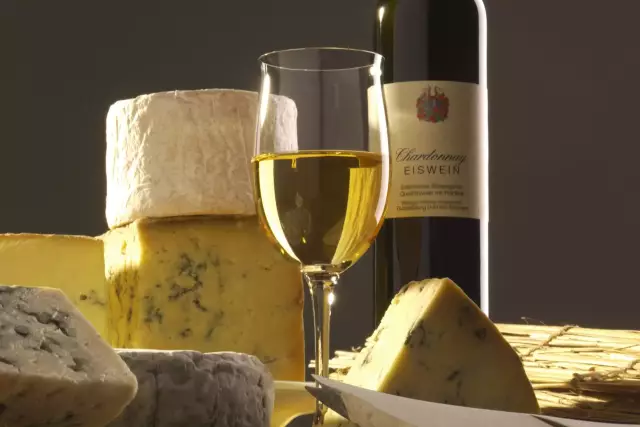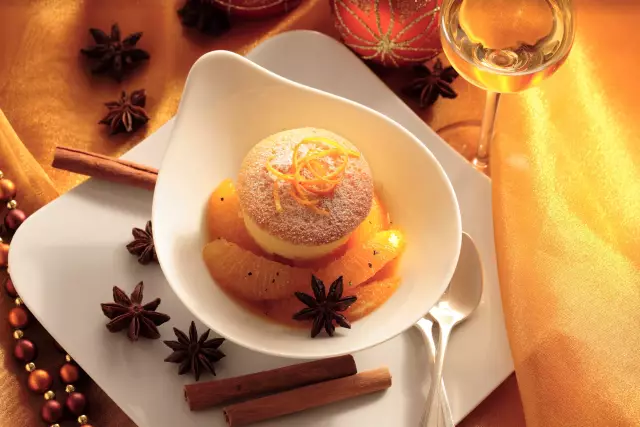Aspargus & Wine
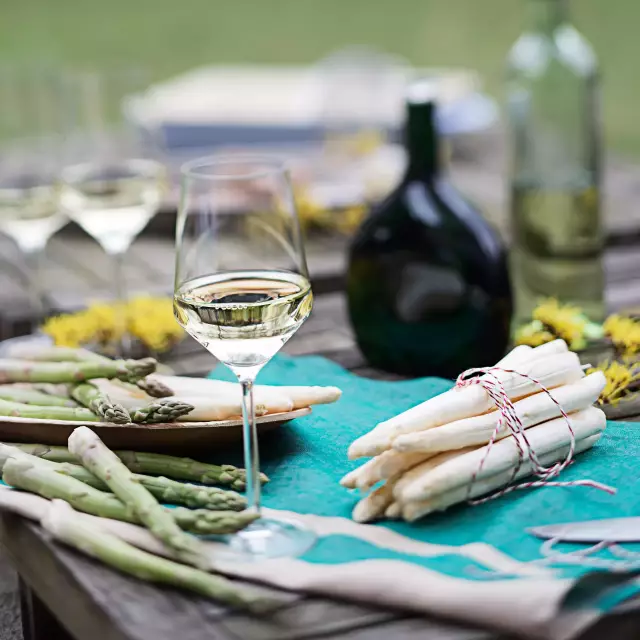
Asparagus's slightly bitter notes can, however, make it a tricky partner when it comes to wine. It often clashes when paired with the standard fruit-driven varietals. Possible alternatives: Silvaner, Weißburgunder, Grauburgunder and Rivaner (Müller-Thurgau). With their round acidity and delicate fruity aromas — reminiscent of pears, apples, nuts and flowers — they lull these savory stalks into submission, even coaxing out a bit of sweetness.
Facts
-
1 cm
per day asparagus grows at the start of the season
-
20-25 days
asparagus needs until it is "fully grown"
-
June 24
end of asparagus season
-
29.000 ha
asparagus cultivation area in Germany
Wine and Asparagus Pairings
White Asparagus – classic 'Spargel' is a true delicacy with its distinctive juxtaposition of mild, almost sweet and pleasantly bitter flavors. The subtle aromas of Silvaner from Rheinhessen or Franken, as well as Gutedels from Baden provide flavor-rich asparagus with plenty of room to move and breathe.
Violet Asparagus – with slightly richer aromas than its snow-white sibling, and a correspondingly deeper bitter note as well. Weißburgunder, such as a bottle from Baden or a fresh Rivaner from Franken, serve as excellent pairing companions.
Green Asparagus – the color is more intense, as are the aromas. Rich aromas require a wine of suitable and similar weight. Pfalz Rieslings and powerful Grauburgunder and Chardonnay (unoaked) make an ideal complement.
Sauces – the classics include melted butter, chopped eggs, Hollandaise and tartar. Rich sauces benefit from the contrast of a zippy wine pairing. While the fine spirited acidity in Mosel Rieslings serves to lighten a rich sauce, spicier versions demand a wine of considerable expression.
Salads – Asparagus with a mild vinaigrette or a mildly spiced dressing. If using vinegar, try white wine vinegar mixed with a bit of the asparagus broth. Mild vinaigrette pairs beautifully with a Silvaner from Franken or an off-dry Rheingau Riesling, whose playful acidity ensures that its voice sings bright and clear.
Asparagus with Fish, Meat and Ham
Fish with Asparagus – fresh salmon or arctic char, poached or lightly sautéed in butter, with a touch of Hollandaise sauce — it doesn't get much better than this! Elegant, expressive yet still slightly savory aromas require a balanced wine pairing: A friendly Weißburgunder from the Pfalz or a refreshing Rivaner from Franken represent ideal companions.
Pork – milder when cooked, while the traditional cured variety (from Italy or Spain) delivers a slightly nuttier yet mild spice. The sweet nuances of the asparagus and the saltiness of the ham form beautiful gustatory counterpoints. We recommend Sauvignon Blanc or Silvaner with a delicately fruity character.
Savory meats ask a lot of the fine aromas of the asparagus. Veal or pork cutlet, or a mildly spiced roast, can feature an expressive range of aromas. There are also expressive, robust wines with the rich aromatic range to more than hold their own. For a truly delicious pairing try Weißburgunder, Grauburgunder or Chardonnay such as those from Baden.
Ideas for an Open Air Asparagus Picnic
White wines that pair well with asparagus dishes should be served appropriately chilled. Whether at home or in a restaurant, there's always a solution: Should you find yourself on the beach, bury the chilled bottle in wet sand, or take advantage of the cold from a nearby brook. Or take a peek at one of our wine cooling bags, sleeves or chillers (available in the DWI Gourmet shop). Once pre-chilled in the refrigerator, they keep white wine at a proper serving temperature for a good long while.
So how best to prep the asparagus? Simply, with Hollandaise sauce and baby potatoes? Or a bit more daring: cooked al dente and wrapped in cured, thinly sliced ham (Black Forest, San Daniele, Bayonne, Serrano - whatever suits your taste). For extra flair, pair with a mild mayonnaise dip accented with yogurt, lemon juice, capers and parsley.
If you would prefer a picnic in the park, and the journey from oven to blanket is not too far, then try filling a puff-pastry with asparagus and dot it with plenty of butter and spice (salt, pepper, nutmeg). Bake in a hot oven and wrap up in aluminum foil to keep warm, or lay on a pan for transport to the park.
A refreshing option: a salad of asparagus, baby potatoes, smoked fish, and a few pieces of lemon and lemon juice dressing, olive oil and mustard, a pinch of sugar, cayenne pepper and salt to taste. Fill into a canning jar, or into several small jars, one for each diner. Any of the asparagus wines will make a beautiful pairing. And now: Enjoy the fresh air!
Why is asparagus called "white gold"?
Asparagus has been grown and consumed since the 16th century. At that time it was the vegetable of the nobility, because asparagus cultivation was costly and the price was correspondingly high. Therefore, asparagus is still called the "noblest" or "king of vegetables", but also "white gold".
Varietals

More recipe ideas
to sweet selections Apple doughnuts with vanilla sauce
to sweet selections
- 5 große, säuerliche Äpfel
- 200 Gramm Mehl
- 2 Eier
- 250 ml Milch
- 2 EL Rum
- Nach Bedarf Schmalz oder Öl
- Nach Belieben Zimt, Zucker, Salz
Peel the apples and remove the core, cut into finger-thick, even slices. Drizzle with rum and sugar. Leave to infuse.
Stir the batter, it should be quite thick. Turn the apple rings in it and bake floating in hot fat until golden brown.
<p
<p>Drain on kitchen paper and serve hot with cinnamon and sugar.
- Riesling (süß & edelsüß)
- Scheurebe (süß & edelsüß)
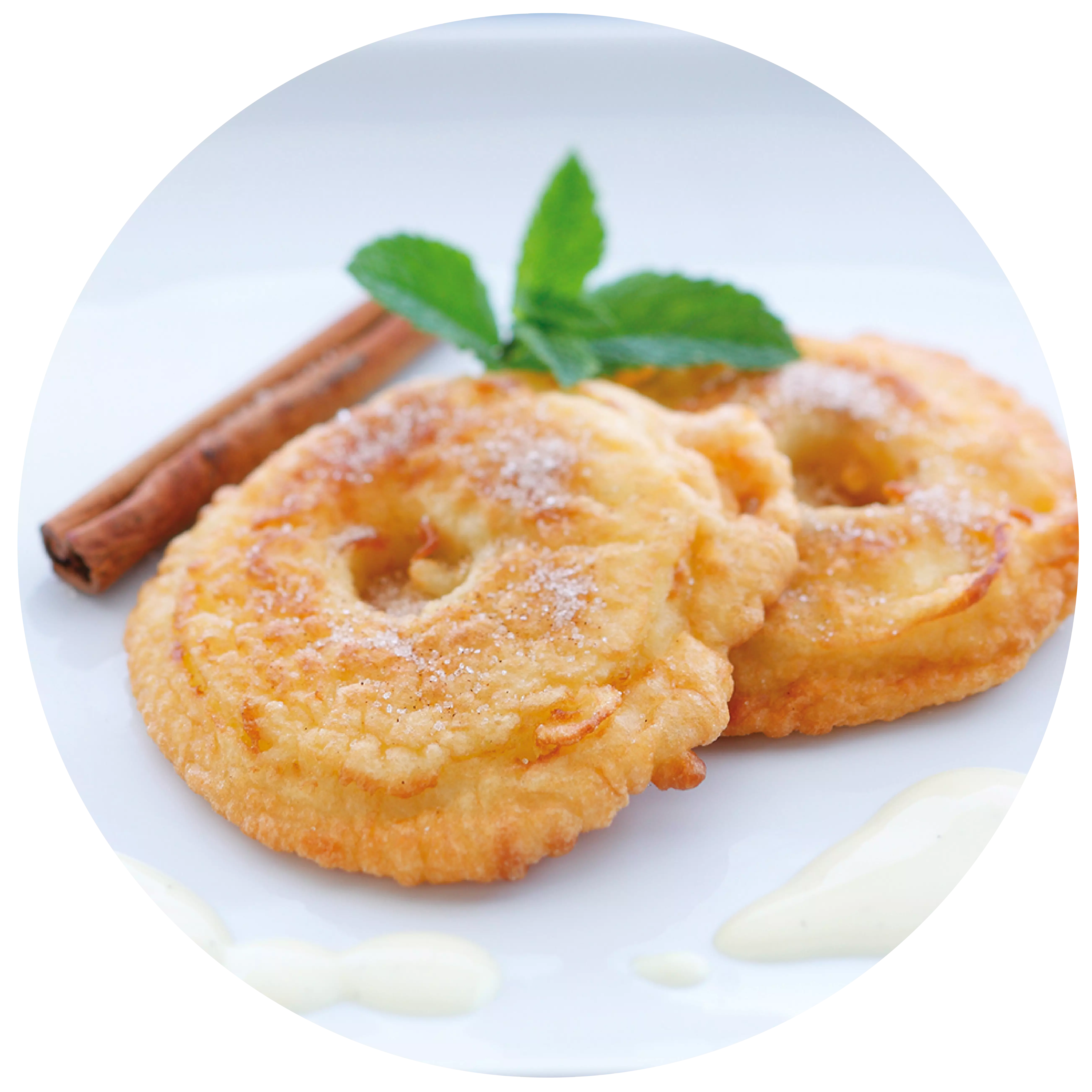
White asparagus with pancake strips Asparagus with "Kratzete"
White asparagus with pancake strips and champagne butter sauce.
- 1kg Weißer Spargel
- 200g Mehl
- 4 Eier
- 150ml Milch
- 1TL Butterschmalz zum Braten
- 2EL Butter
- 1 Zitrone
- 1 Prise Zucker
- 1-3 Schnittlauchröllchen zum Garnieren
- 1 Für die Soße:
- 150g Butter
- 50ml Sahne
- 50ml Sekt
- etwas Salz und Pfeffer
Mix the flour with the eggs, milk and a pinch of salt to make a smooth pancake batter. Leave to soak for 30 minutes.
In the meantime, peel the asparagus and cook in salted water with 2 tbsp butter and a pinch of sugar until al dente. Drain well and keep warm.
<p
<p>Pour the pancake batter in batches into hot clarified butter
.
pour into hot clarified butter. When the underside is browned, use a fork to scrape into pieces. Finish frying until the pieces are golden yellow.
For the champagne-butter sauce, bring the cream to the boil, reduce slightly and stir in the cold pieces of butter (walnut-sized). Add the sparkling wine and season to taste with salt and pepper.
<p
<p>Arrange the asparagus on pre-warmed plates. Add the kratzete, drizzle with the sauce and garnish with chives.
<p
<p>Wine recommendation:
A mild and dry Gutedel or a delicate Kabinett wine from Riesling or Pinot Blanc.
- Gutedel (trocken)
- Riesling (brut)
- Pinot Gris (brut nature)
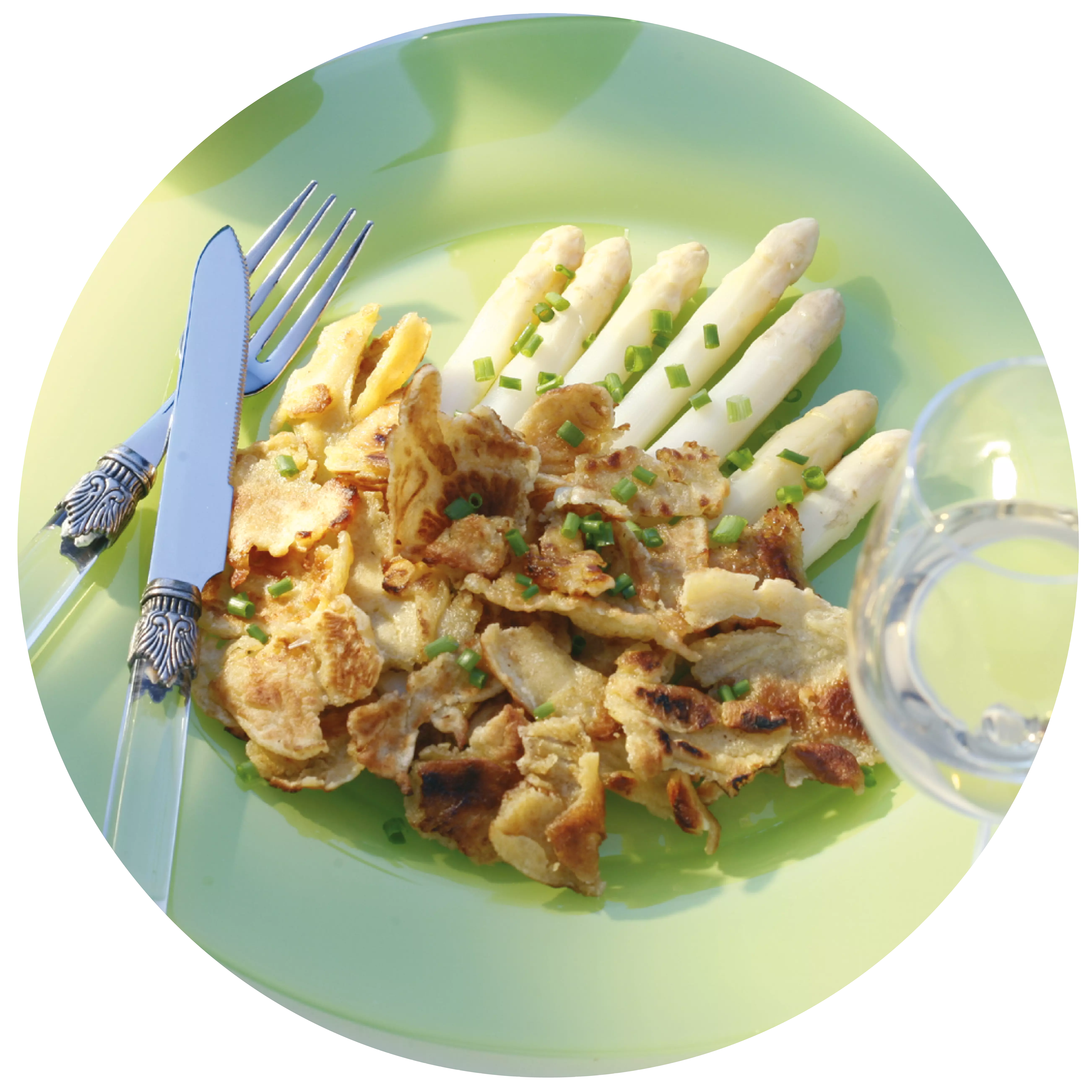
with dry sparkling wine Sparkling wine and lime dessert
with dry sparkling wine
- 300ml Winzersekt
- 4 Limetten
- 100g Zucker
- 30g Speisestärke
- 100g Butterkekse
- 50g ungesalzene Butter
- 2 Eiweiße
- 50g grieschicher Joghurt
- 150g Schlagsahne
Pour the sparkling wine and sugar into a pan. Chill the remaining sparkling wine. Wash 1 lime with hot water and finely grate the zest. Halve the lime and 2 others, squeeze out the juice and mix with the cornflour. Pour everything into the pan and bring to the boil briefly. Remove the pan from the heat and chill the cream in the fridge.
Fill the shortbread biscuits into a freezer bag, crush with a rolling pin and place in a bowl. Melt the butter in a pan, pour over the crumbled shortbread biscuits, add a pinch of salt and mix well. Leave to cool briefly, divide half into large wine glasses and press down firmly.
Cut the lime into slices. Beat the egg whites with salt until stiff. Stir the yoghurt into the chilled champagne and lime cream. Whip the cream until stiff and fold into the cooled cream, one after the other, together with the beaten egg whites. Spread half over wine glasses, add another layer of shortbread biscuits and finish with a layer of cream. Garnish with lime slices and pour in the remaining sparkling wine. Toast and enjoy!
- Riesling (trocken)
- Pinot Blanc (trocken)
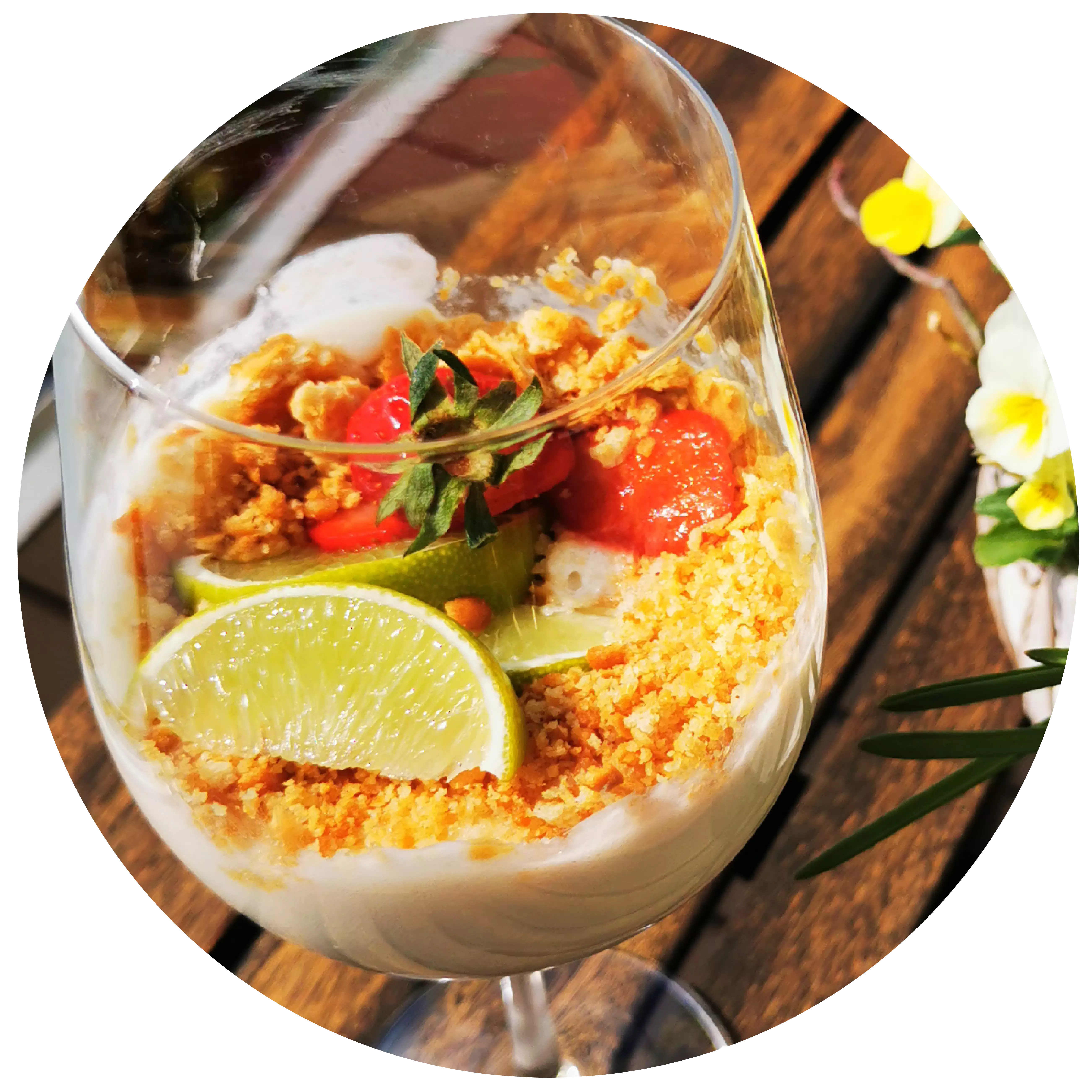
Japanese hollandaise succeeds with wasabi paste Salmon with Japanese hollandaise and green asparagus
Combine salmon with hollandaise and asparagus with a dry Riesling.
- 4x 150g Lachsfilet mit Haut
- 1 Limette
- 2 Zehen Knoblauch
- 4 EL Honig
- 10 EL Sojasauce
- 200g Butter
- 4 Eier
- 1 EL Joghurt
- 2 EL Reisessig
- 2 EL Wasabipaste
- 500 g Grüner Spargel
For the marinade, finely chop the garlic first. Wash the lime in hot water, grate the zest and squeeze out the juice and bring everything to the boil with the honey and soya sauce. Put to one side.
Now prepare the Japanese hollandaise: Bring 180g butter to the boil. Place the egg yolks, yoghurt, rice vinegar, wasabi paste and a pinch of salt in a tall measuring jug and mix with a hand blender. Gradually mix the boiling (!) butter into the egg yolks using a hand blender. Season the hollandaise with salt and pepper to taste and keep the measuring jug warm in hot water.
Peel the bottom third of 500 g green asparagus and cut off the ends. Melt 1 tbsp butter in a large pan. Add the asparagus to the pan, pour in 50 ml water and season with salt and pepper. Cover and bring to the boil briefly.
Fry the salmon fillets on the skin side in a little oil for about 4 minutes. Turn the salmon and fry for a further 2 minutes. Then turn again and baste with the marinade. Remove the salmon from the pan and reduce the marinade until thick. Brush the salmon with it. Serve the salmon with the hollandaise and asparagus. Enjoy your meal!
Wine recommendation:
WINE TIP: Dry Rielsing
- Riesling (trocken)
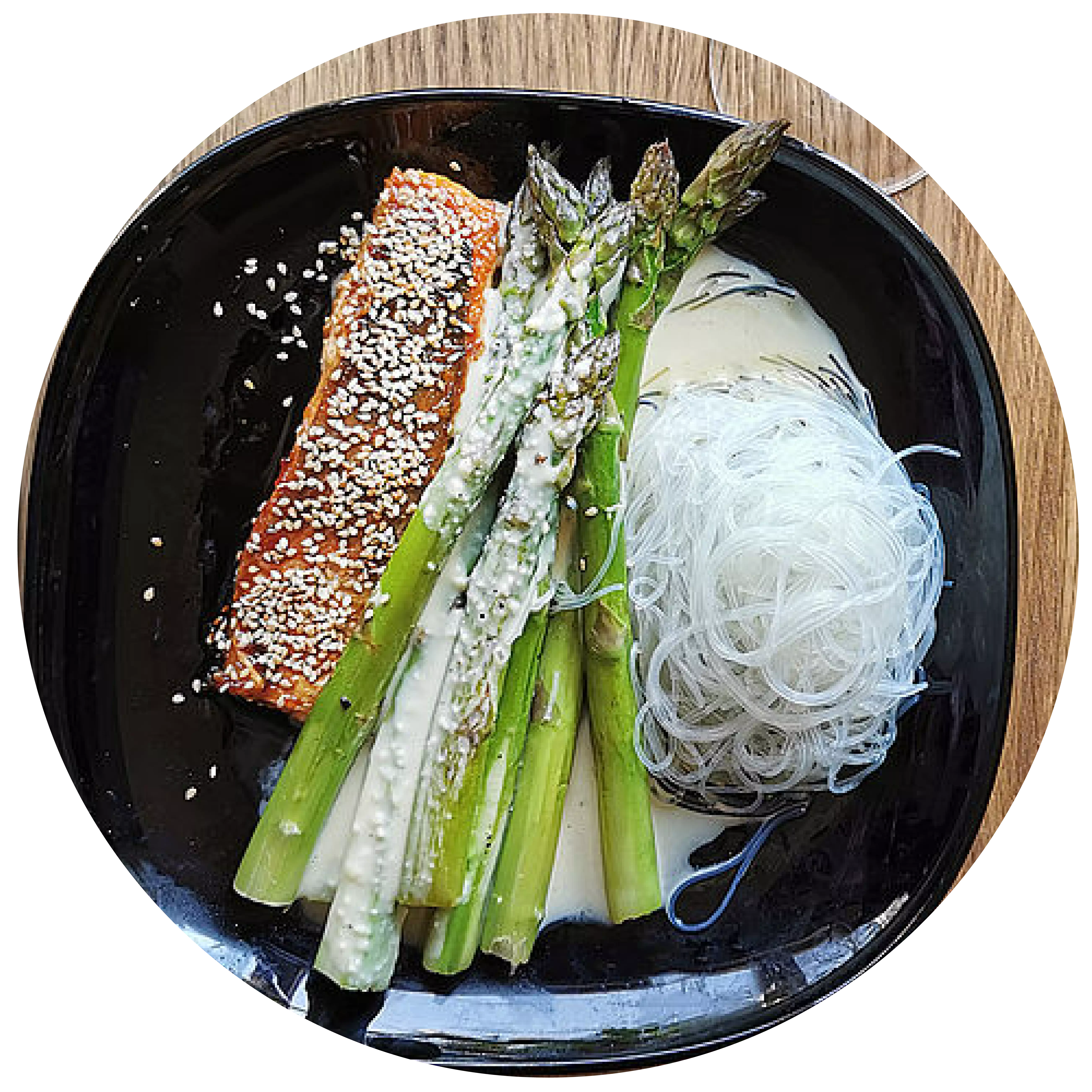
Events
-
Show
winetasting in our winery - blind tasting
Mainz-Hechtsheim


